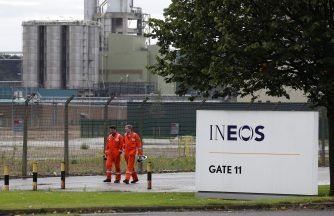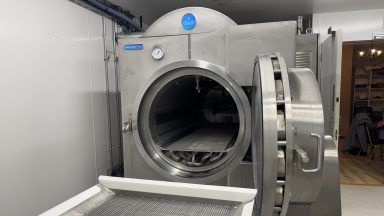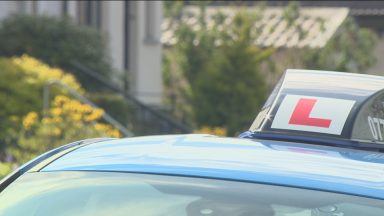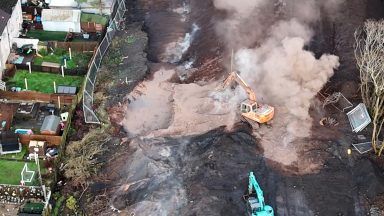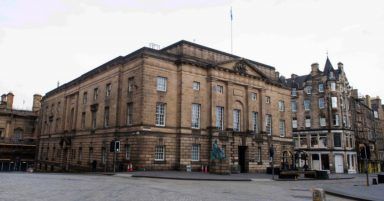The excavation of human remains, which could date back as far as 1300, has begun in Edinburgh.
A team of archaeologists are on-site preparing to remove remains that are likely to be affected by the Trams to Newhaven project.
They have so far exhumed more than 10 bodies, dating from between 1300 and 1650, and have uncovered a cannonball, as well as the apparent remnants of the original medieval graveyard wall.
Previous investigations have shown that in the medieval period the South Leith Parish Church graveyard extended across the road with graves surviving beneath the current road surface.
In some cases, the skeletons which have been discovered can be seen lying in rest mere centimetres beneath pipelines.

After the excavation, the remains will be examined to reveal information on the origins, health, diseases and diet of the people of medieval Leith.
City archaeologist John Lawson said: “The historic port and town of Leith is one of Scotland’s most significant urban archaeological sites with evidence of occupation going back over 900 years.
“Although only just started, the excavations by our team have already provided important new evidence regarding the history of the graveyard and earlier town with the discovery of what we believe are the remains of its original medieval graveyard wall.
“It is hoped that further new discoveries will be made and that we will learn important new evidence for the lives of Leith’s medieval inhabitants so that we can tell their story to modern Leithers.”
The city council approved a £207m plan to extend the line to Newhaven in the north of the city last year.

Following a two month shutdown as a result of coronavirus, the contractors working on the tram extension began work again this week.
Transport and environment convener Lesley Macinnes said: “The Trams to Newhaven project is now up and running again and progressing well, as the main works get under way on Leith Walk.
“This element of the scheme is just as important as track-laying or landscaping and allows us to conserve a small piece of the area’s heritage for generations to come.”
Last month the archaeologists shared images of discoveries made during initial investigations on Constitution Street, which included rare whalebones and a cannonball thought to date back to the 17th century.

During the first phase, the team took down part of a wall surrounding Constitution Street Graveyard, dating back to 1790, ahead of excavation of the historic graveyard.
Preparatory work led archaeologists to discover what appears to be a large charnel pit which may contain the remains of some burials recovered from the laying of 19th century services in Constitution Street.
The main construction works on Leith Walk from Elm Row to Crown Place are currently under way, with traffic management involving Leith Walk being reduced to one city bound lane between London Road and Crown Place for the duration.
Follow STV News on WhatsApp
Scan the QR code on your mobile device for all the latest news from around the country




